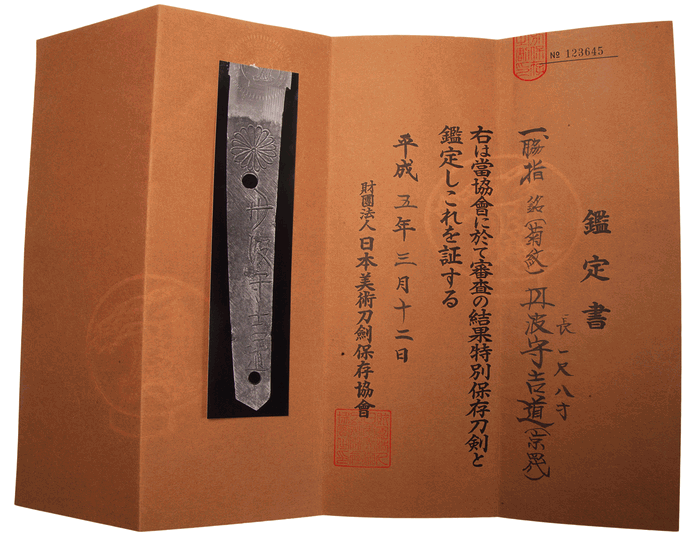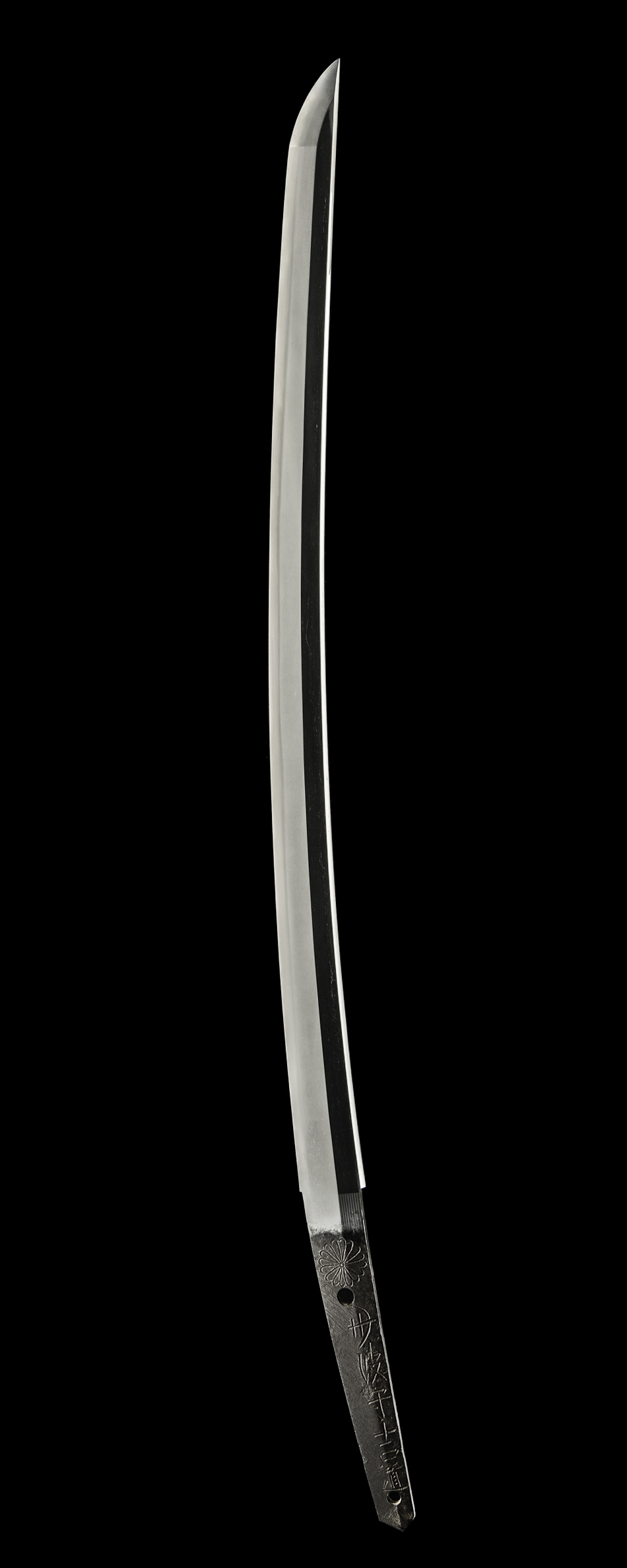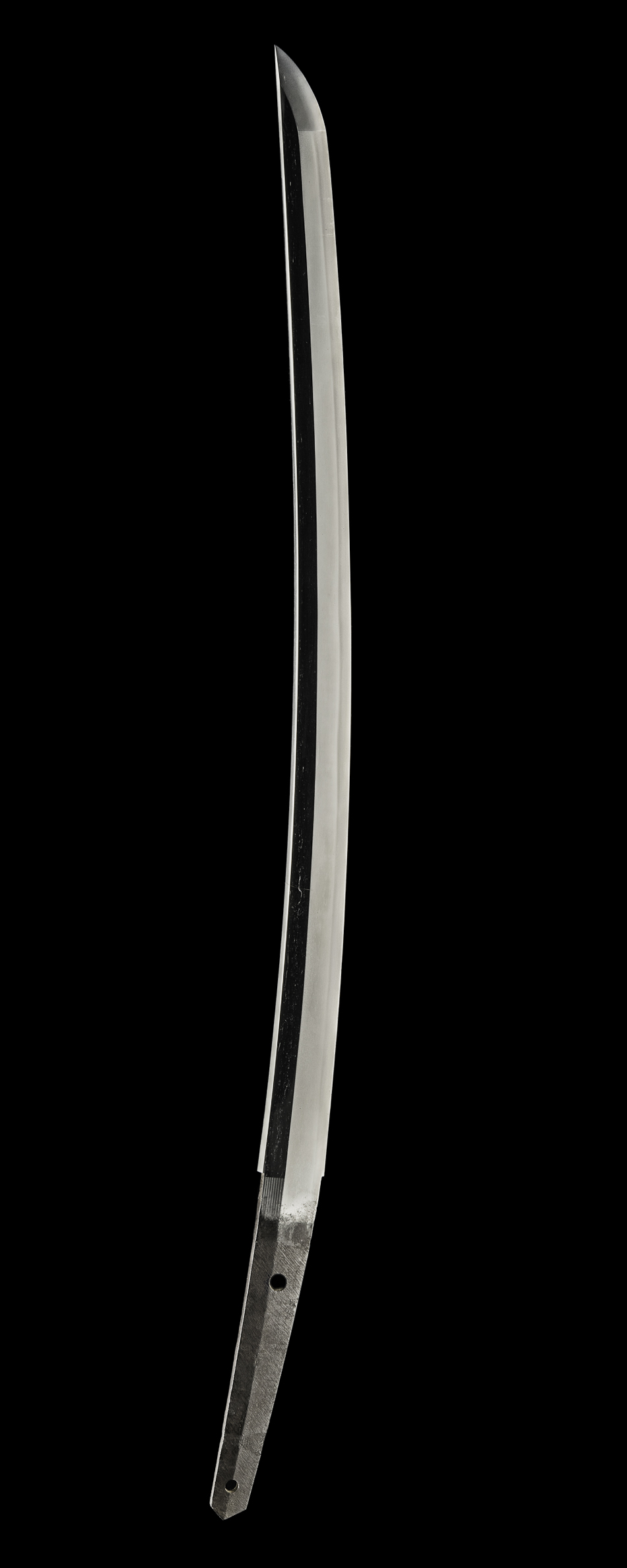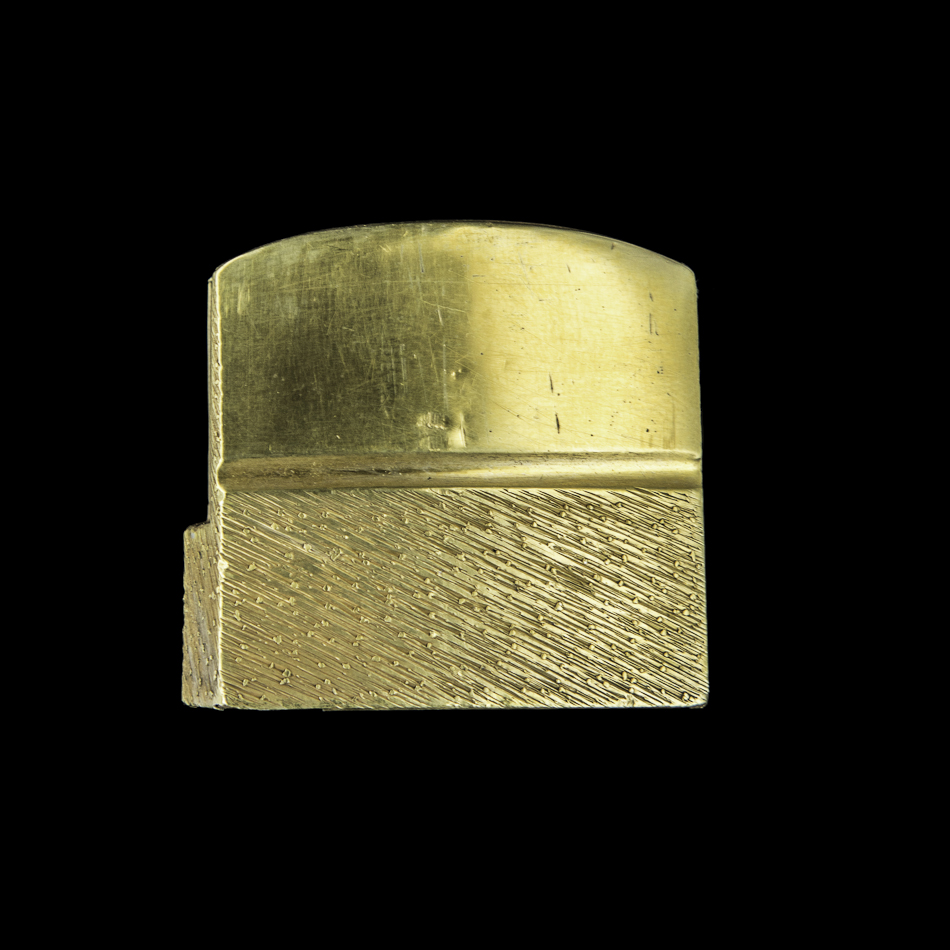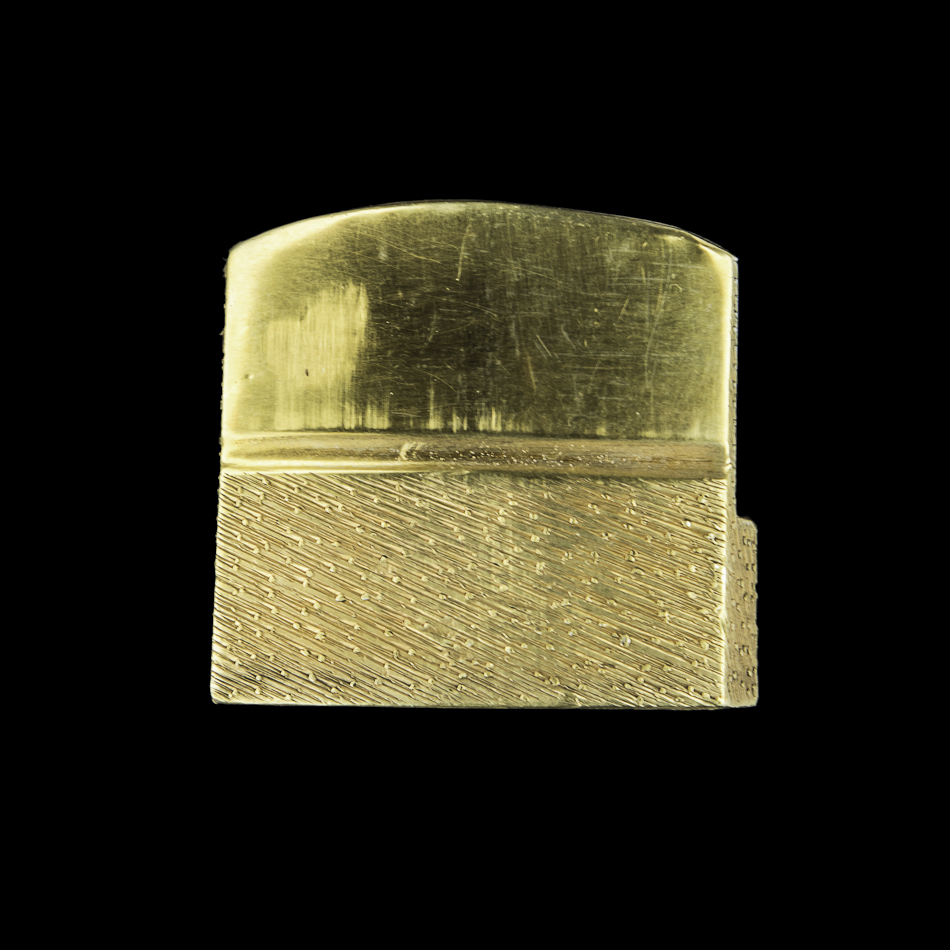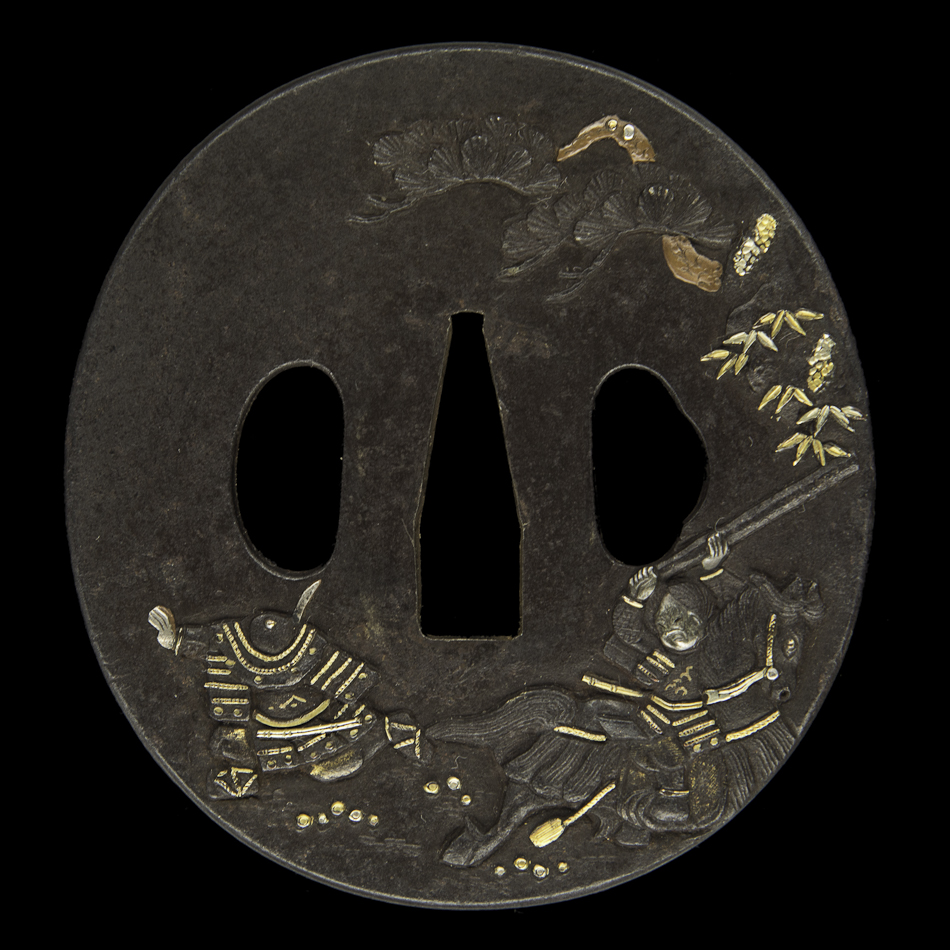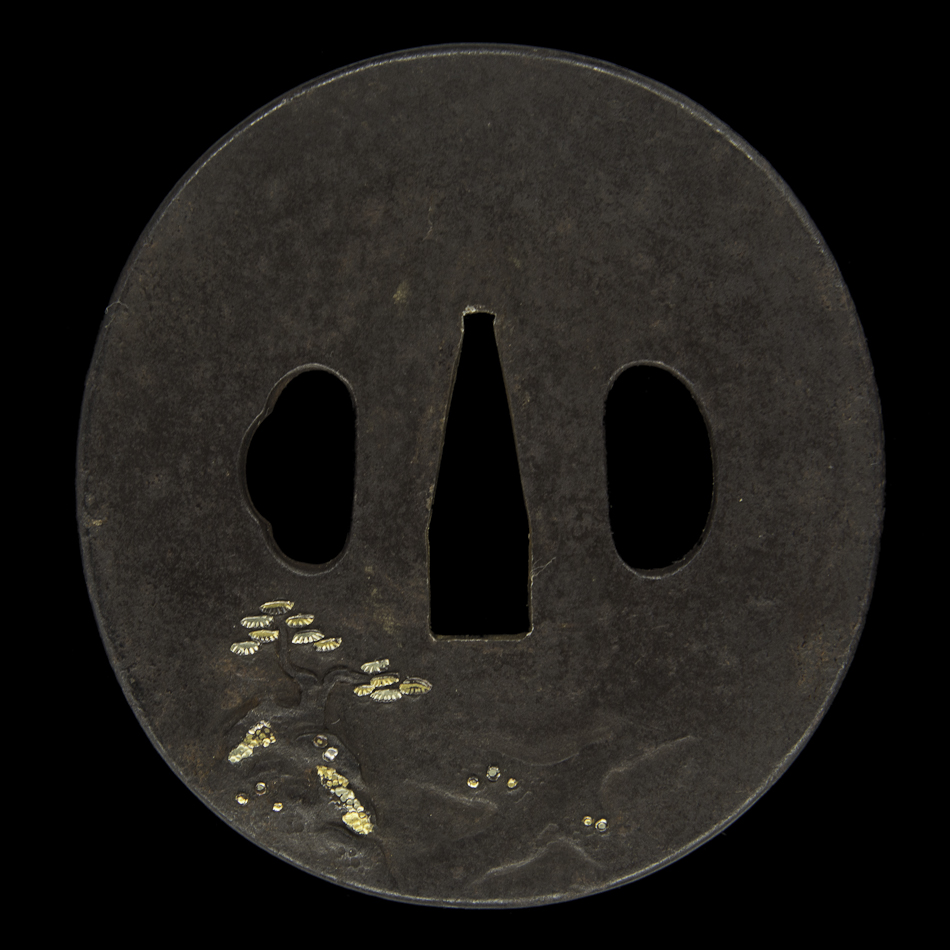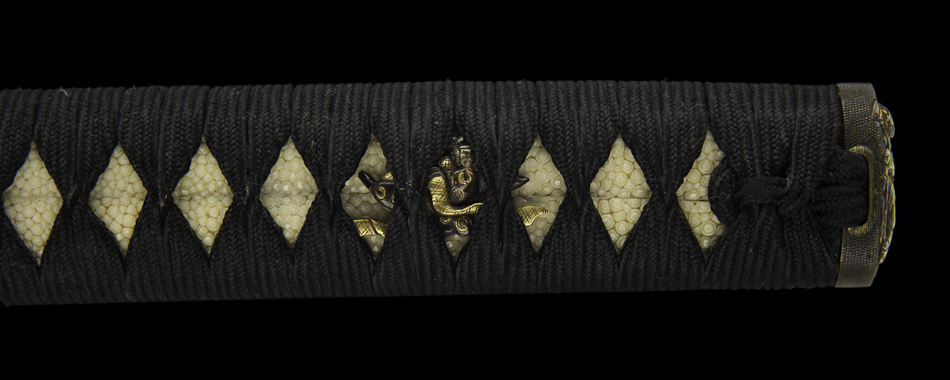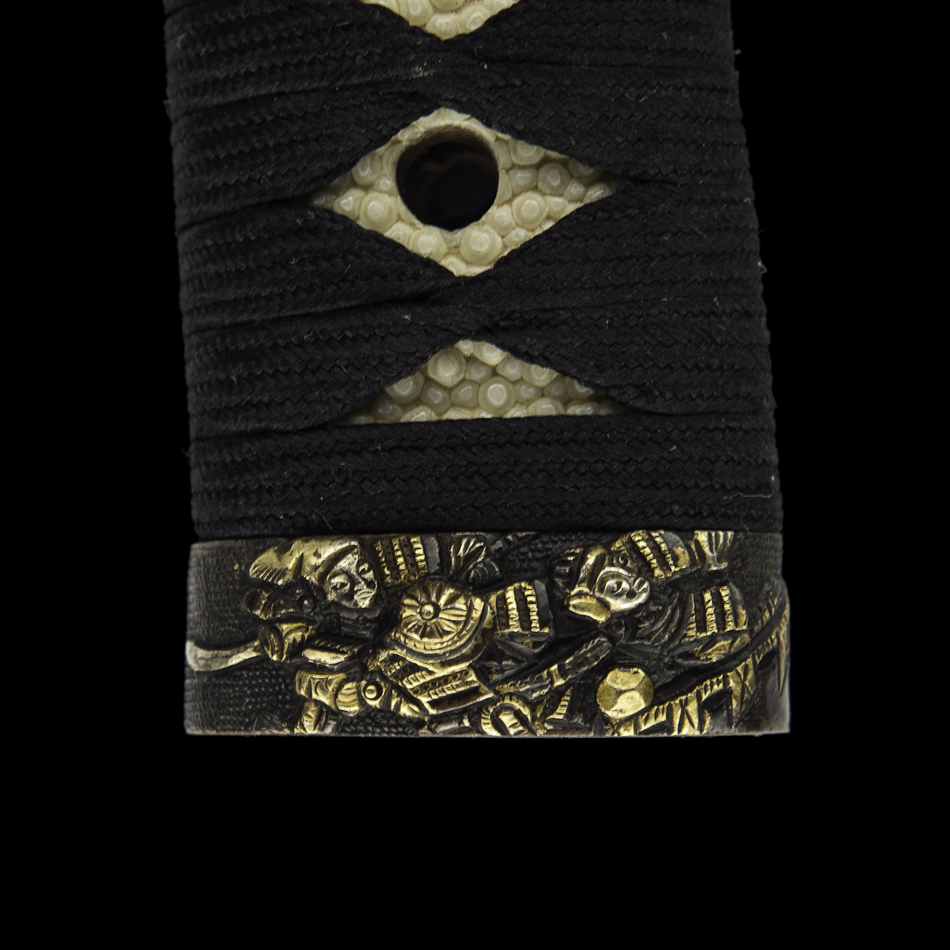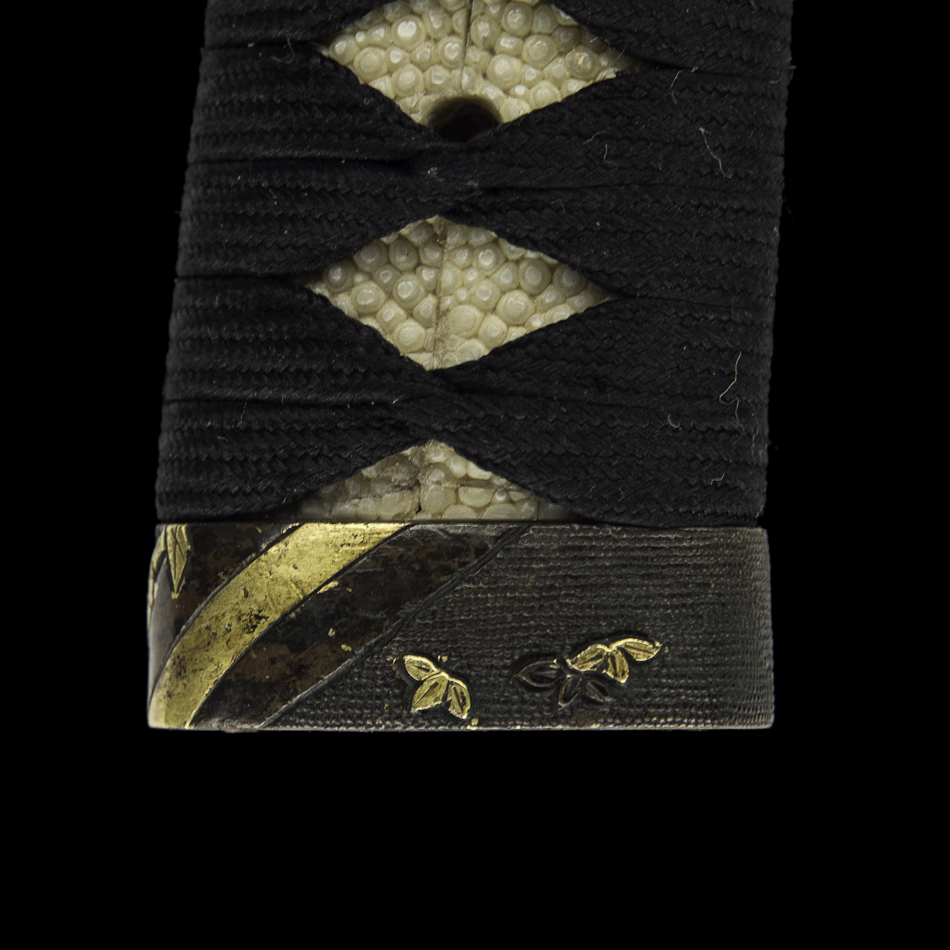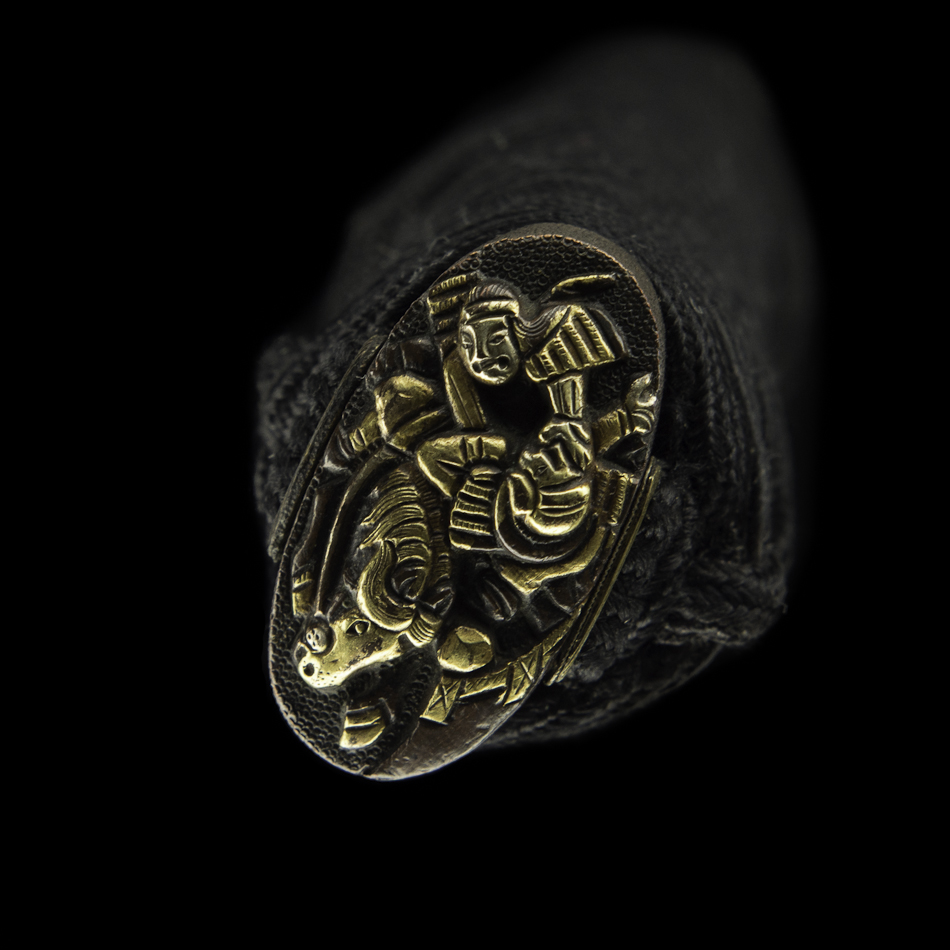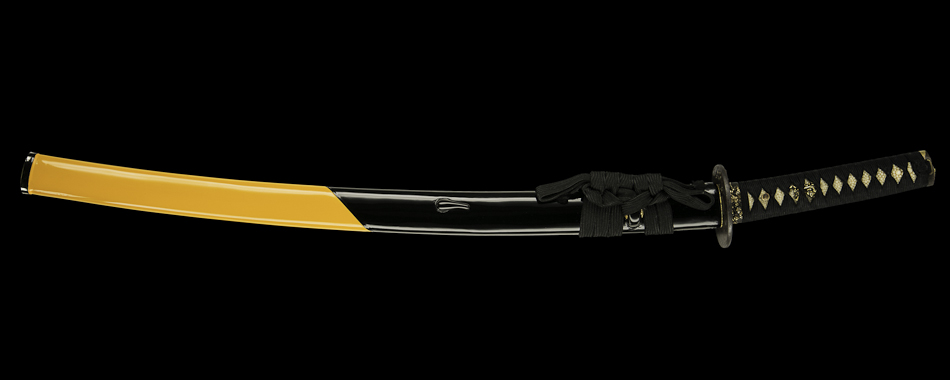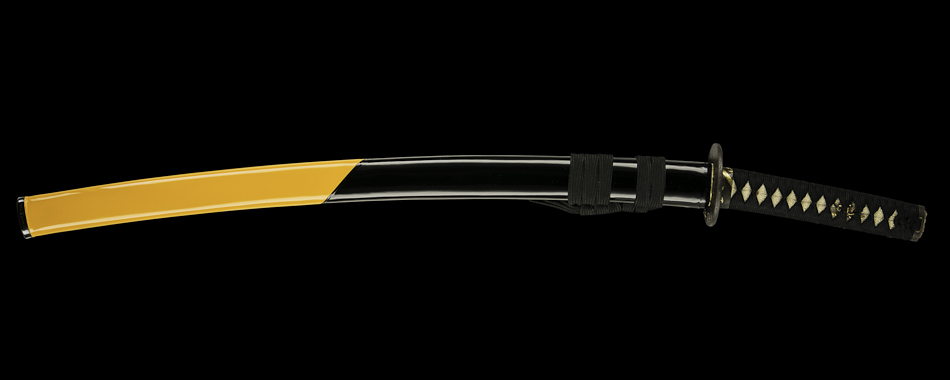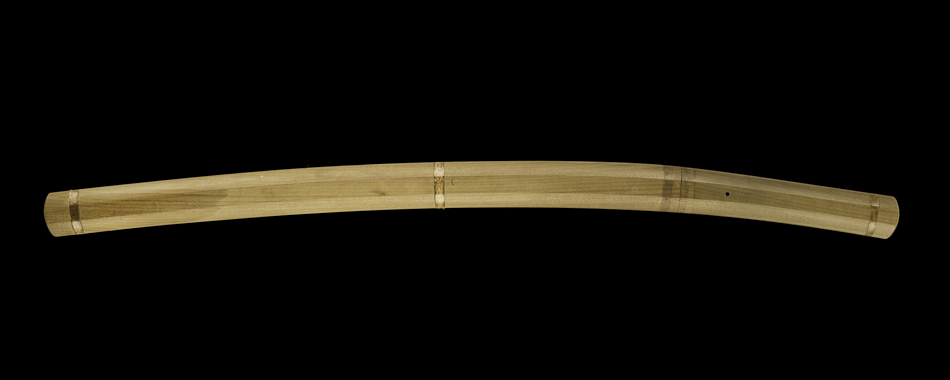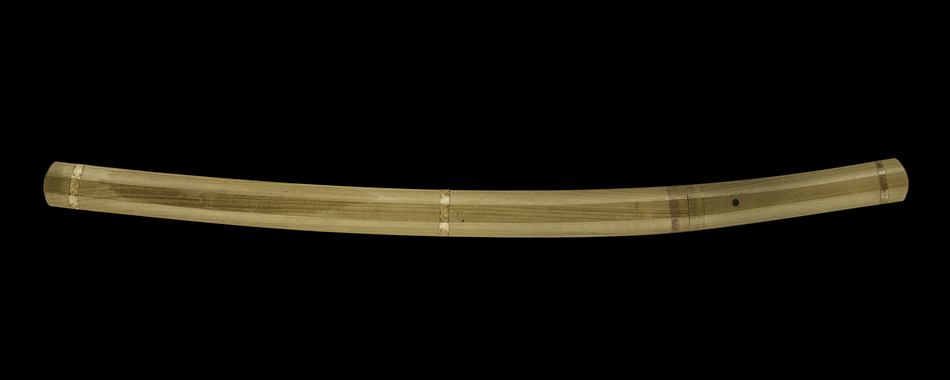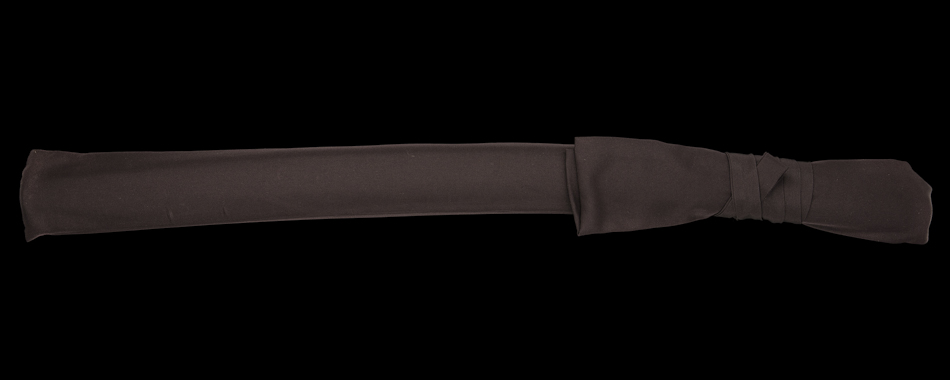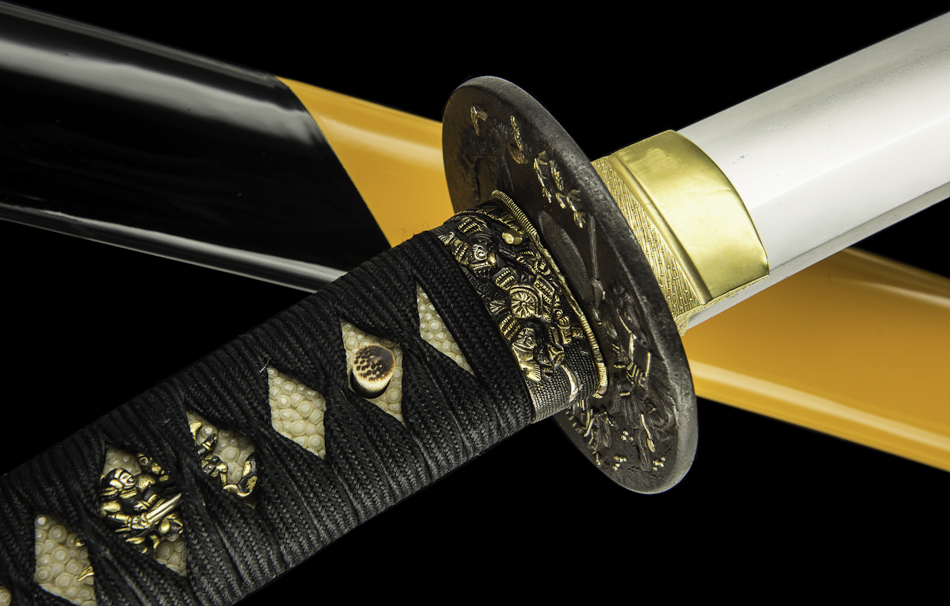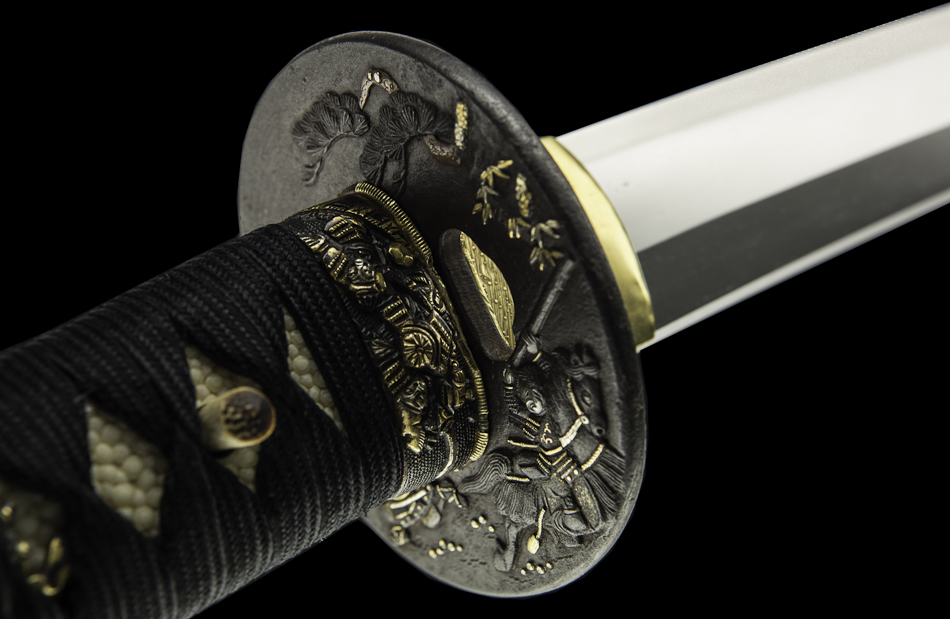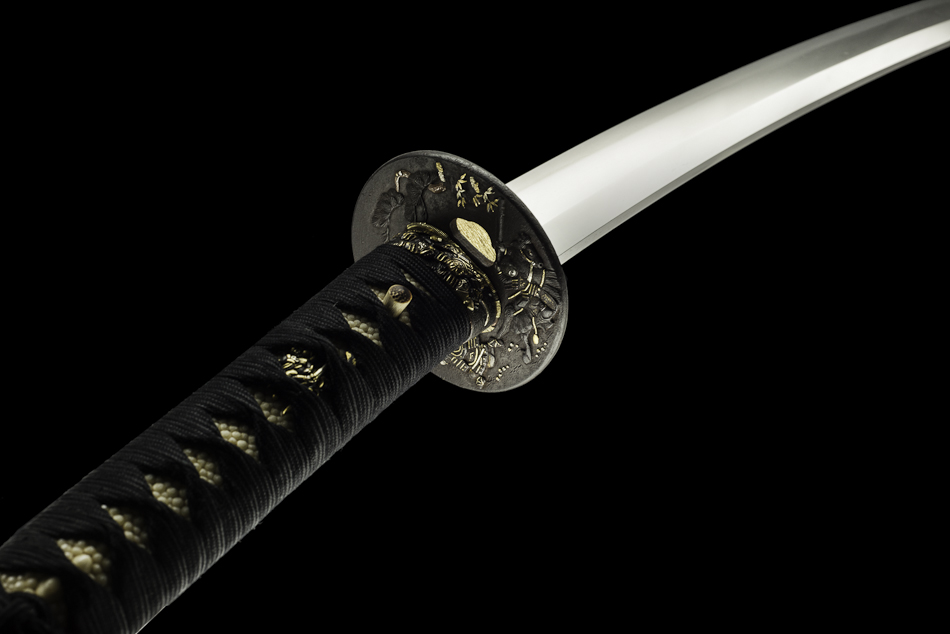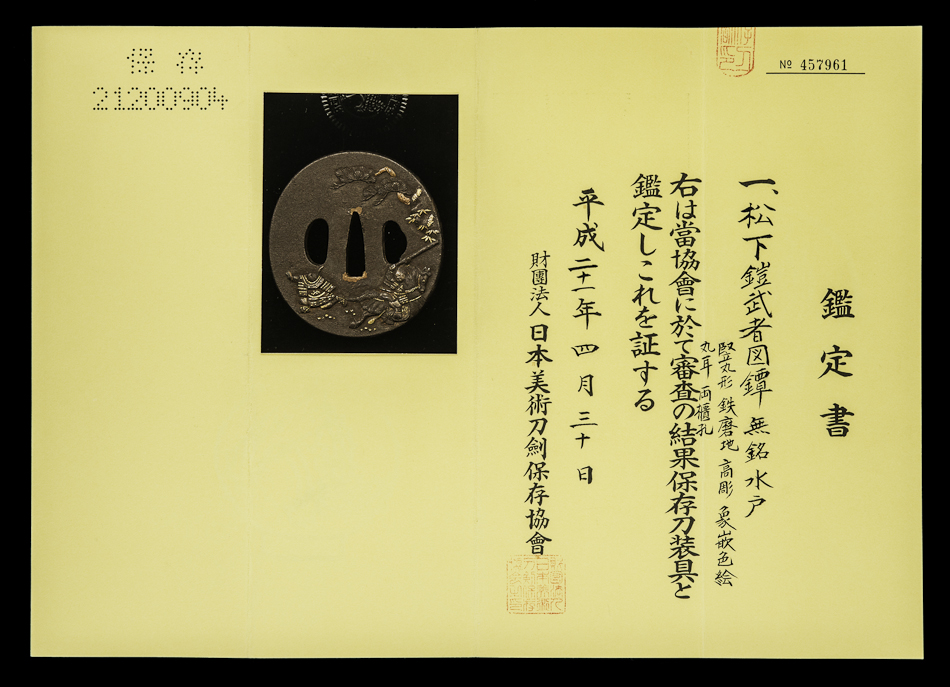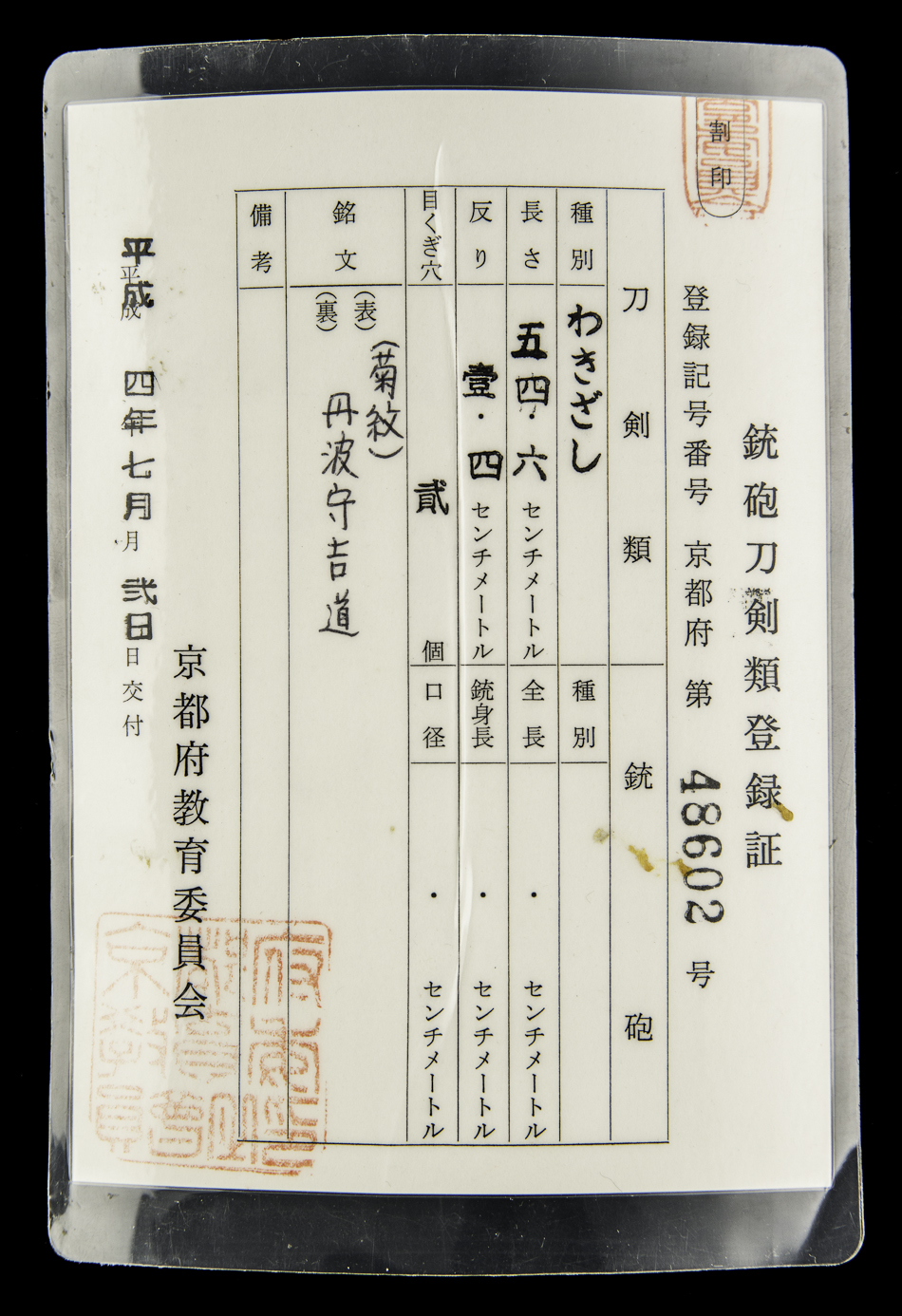A Tanba no Kami Yoshimichi Wakizashi (4th Generation) with Custom-made Koshirae
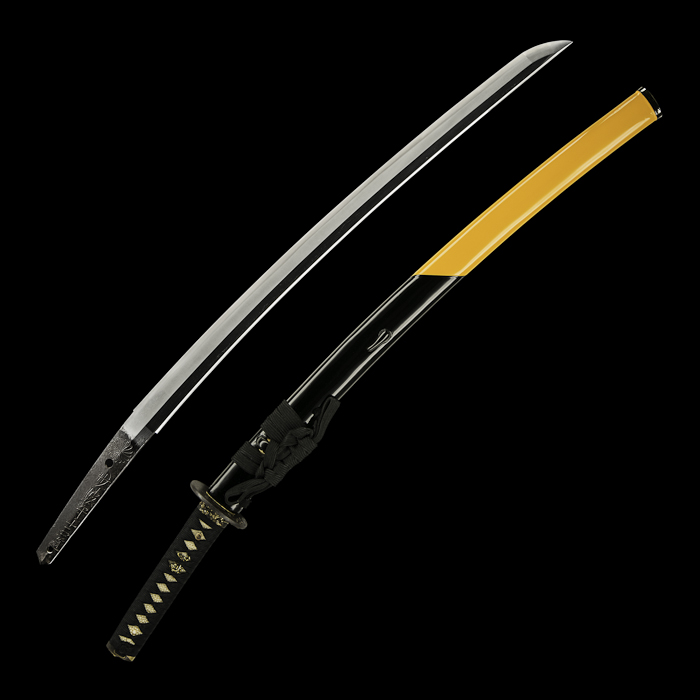
Type: Wakizashi Zaimei (Signed)
Item No.: ujwa008
Swordsmith: Tanba no Kami Yoshimichi (丹波守吉道) 4th generation
Period: Shinto (Early-Edo Period)
Length: 54.6cm
Curvature: 1.4cm
Mekugi: 2
Hamon: Suguha with Sudare-ba
Habaki: Copper with Gold Wrap
Included: Traditional shirasaya scabbard, Custom-made koshirae, gorgeous deep purple silk carry bag, sword maintenance kit, NBTHK Tokubetsu Hozon certification paper, NBTHK Hozon certificate for the tsuba, sword stand, DVD (Art of the Japanese Sword)
SOLD AT THE KAMAKURA SWORD SHOW II
Description:
Behold a wonderful Japanese sword from one of the great sword-making traditions.
The first Tanba no Kami Yoshimichi was the 3rd son of Kanemichi in Mino. He moved to Kyoto in 1559, then received the name as “Tanba no Kami” in 1595. His swords were seen by 1634, and then passed away in 1635 or 1636. He was called as “Hokake Tanba” because one of his Kanji character 丹 (Tan) looks similar to 帆 (Ho) of 帆掛 (Hokake) which means “Sail”. Notice how the first character in the name engraved on the tang is of the shape of a sail.
The kikumon (family crest) has been used by the Japanese emperor families since the Kamakura period. Kiku means chrysanthemum, and is the national flower of Japan. Also, it has been used at shrines relate to the Japanese emperor. This kikumon has 16 petals. According to expert Akira Iwata, the 16 petals of the chrysanthemum originally came from Sumerians who established the oldest civilization in about 3500 BC. “16 petals chrysanthemum was originally used by sailors as a compass or a sundial.”
Only swordsmiths that were approved by the emperor were given the right to use the chrysanthemum mark on their blades.
The sword is in superb condition and quite literally takes your breath away. It is abundantly clear why the NBTHK designated this sword a special conservation status, or NBTHK Tokubetsu Hozon.
After the first Yoshimichi, the school flourished in Yamashiro which is now in Kyoto and Settsu, which is now in Osaka. The Sudareba hamon is a very famous trait from Yoshimichi, which was never before seen in Koto times.
A ‘sudare‘ is a bamboo-strip blind or curtain. Sudare-ba is based on suguha or a shallow notare. The pattern seen inside the hamon looks like sudare. Tanba no Kami Yoshimichi originated the pattern, and his followers maintained it.
The 4th generation in Kyoto Yoshimichi took over the name “Tanba no Kami Yoshimichi” in 1673. He had a long life and his last sword was created in 1721, after 48 years in the craft.
Fully Custom Koshirae Built
As this sword was originally housed solely in it’s shirasaya, a fully customised Edo-period koshirae (fittings) were built to client specifications. The tsuba (guard), menuki (eyelet grips under the hilt) and fuchi-kashira (collar & pommel) carry a Samurai warrior theme. The tsuba has been granted NBTHK Hozon conservation status itself. All fittings were made in the Edo period (17th-19th century).
*All photos taken professionally by Eric Bossick for Unique Japan
Interested in Ownership of an Antique Japanese Sword?
If owning an authentic Japanese Samurai sword is of interest to you and your family, we would be honoured to serve you.
To visitors in Japan…
If you have the pleasure of living in Japan or visiting the country, we recommend that you come to one of our upcoming sword shows or schedule a private VIP meeting with us.
VIP meetings are normally held near JR Ebisu station in Tokyo at a hired gallery space. We can also arrange visits to a company office, hotel, near the airport or at a private residence.
To visitors around the world…
To those exploring our collection online, be sure to download our catalogue of available swords here.
We completely respect the fact it takes a HUGE leap of personal FAITH in us to commit to a particular sword given the reliance on photos and descriptions for such a highly valued item.
It is our PROMISE to address all your questions to the best of our ability. It’s important to us that you feel completely confident that the sword you choose (and that chooses you) is destined for you and your family.
You can also take reassurance that ALL swords from Unique Japan are GUARANTEED AUTHENTIC and come with a 3-DAY WORRY FREE inspection period upon arrival to your home.
Legal Exportation from Japan
Yes, it is completely legal to own a genuine antique Japanese sword (even those that are several hundreds of years old). Unique Japan specialises in all proper legal compliances so that swords can be exported from Japan.
All required paperwork is provided free of charge for clients.
All required paperwork is provided free of charge for clients.
Unique Japan has safely sent well over 150 swords FROM Japan to immensely proud owners in the United States, Canada, Europe and around the world.
We look forward to making your dream of owning an authentic Japanese sword a reality for you.
Popular Pages of Interest
→ 7 Points to Consider when Choosing your Japanese Sword
→ 5 Steps to Owning an Authentic Japanese Samurai Sword
→ Download catalogue of currently available Japanese swords
→ PARTS of a Japanese Sword and Mountings (High-quality images)
→ 7 reasons WHY I love Japanese swords
→ Resource Information on Japanese Swords
→ NBTHK Certification Paper Ranking for Japanese Swords
→ NTHK-NPO Certification Paper Ranking for Japanese Swords
→ 5 Steps to Owning an Authentic Japanese Samurai Sword
→ Download catalogue of currently available Japanese swords
→ PARTS of a Japanese Sword and Mountings (High-quality images)
→ 7 reasons WHY I love Japanese swords
→ Resource Information on Japanese Swords
→ NBTHK Certification Paper Ranking for Japanese Swords
→ NTHK-NPO Certification Paper Ranking for Japanese Swords



